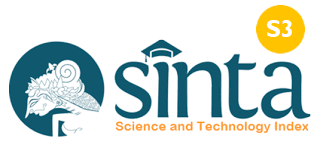The Effect of Jigsaw Technique in Reading Comprehension on Recount Text
DOI:
https://doi.org/10.37329/cetta.v3i1.413Keywords:
Effect, jigsaw, reading comprehension, recount textAbstract
The objective of this research is to find out the effect of Jigsaw technique on reading comprehension at grade ten of SMA 4 Negeri Pematangsiantar. The research used descriptive quantitative research design by applying Quasi-Experimental design. In conducting this design, the subjects of the research were divided into two groups: experimental group and control group. The treatment is introduced only to the experimental subject. The experimental group is treated by using Jigsaw technique while the control group is treated without Jigsaw technique. The subject of this research was the grade ten students (X PMIA 4 and X PMIA 5) in SMA Negeri 4 Pematangsiantar. The researcher used mobile phone as instrument which recorded video teacher and students activity during teaching and learning process in the class.
The result of the research showed that in significance degree of 5%, the value of t-observe > t-table that was (5.55 > 1.669). It could be said that t-observe was higher than t-table. So, the null hypothesis is rejected while the alternative hypothesis is accepted. In other words it can be concluded that the application of Jigsaw teaching technique significantly affects the students’ ability in reading comprehension of recount text at grade ten of SMA Negeri 4 Pematangsiantar.
References
Ary, D. (2010). Introduction to research in education. Belmont, CA: Davis.
Boardman, A., K, J. K., and Vaughn, S. (2008). Teaching reading comprehension to students with learning difficulties. New York: The Guilford Press.
Brassell, D. (2008). Enhancing English as a second language students’ vocabulary knowledge. Journal of Reading, Vol. 8, No. 1. The Reading Matrix Founded.
Burns, N. & Grove, S. K. (2005). The practice of nursing research: Conduct, critique, and utilization (5th ed.). St. Louis: Elsevier Saunders.
Creswell, J. W. (2012). Planning, conduct, and evaluating quantitative and qualitative rresearch. Boston: Pearson.
Herman. (2014). An experiential function on students’ genre of writing. Jakarta: Halaman Moeka Publishing. ISBN: 978-602-269-088-7
Hyland, K. (2008). Cooperative Learning, Success for All, and Evidence - based Reform in education. Éducation et didactique, Vol. 2, No. 2, pp.151-159. Varia.
Meng, J. (2010). Jigsaw cooperative learning in english reading. Journal of Language Teaching and Research, Vol. 1, No. 4, pp. 501-504. Finland.
Saragih, S. (2015). Aplikasi SPSS dalam statistic penelitian pendidikan. Medan: Perdana Publishing.
Downloads
Published
How to Cite
Issue
Section
License
An author who publishes in the Cetta : Jurnal Ilmu Pendidikan agrees to the following terms:
- Author retains the copyright and grants the journal the right of first publication of the work simultaneously licensed under the Creative Commons Attribution-ShareAlike 4.0 License that allows others to share the work with an acknowledgement of the work's authorship and initial publication in this journal
- Author is able to enter into separate, additional contractual arrangements for the non-exclusive distribution of the journal's published version of the work (e.g., post it to an institutional repository or publish it in a book) with the acknowledgement of its initial publication in this journal.
- Author is permitted and encouraged to post his/her work online (e.g., in institutional repositories or on their website) prior to and during the submission process, as it can lead to productive exchanges, as well as earlier and greater citation of the published work (See The Effect of Open Access).
Read more about the Creative Commons Attribution-ShareAlike 4.0 Licence here: https://creativecommons.org/licenses/by-sa/4.0/.





